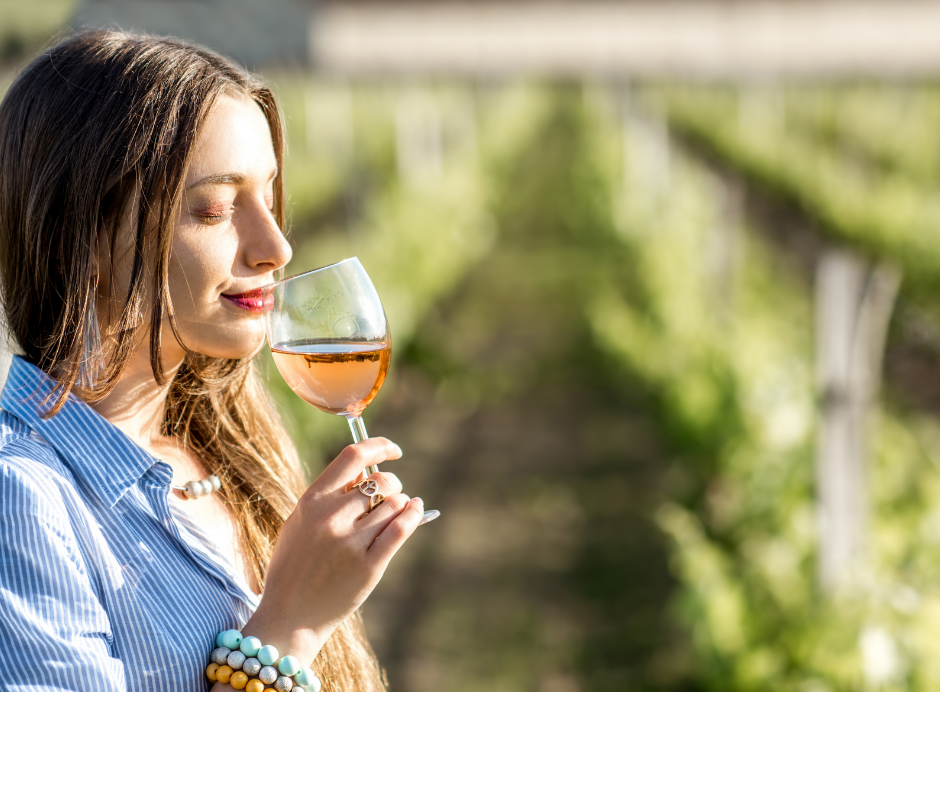
How to taste wine in 4 steps
Share
Do you consider yourself a seasoned wine taster or are you just starting out with wine tasting? Or simply, you have "longer" experience with wine tasting, but you feel that you still cannot fully recognize the character and flavors in the wine. So we have a simple guide just for you. In 4 simple steps, we will show you what to focus on.
1. Look at the color
![]()
When you pick up a glass of wine, the first thing you notice is the color. The glass should be clear and ideally intended for the given type of wine - we will discuss why this is important in another post. Visually check the wine's color, hue and viscosity under neutral light. What color and shade is the wine? The color tells you a lot about the wine even before you taste it! Both white and red wine have different shades from light to richer. In the case of red wine, the more saturated the color, the more pigment and phenols the wine will contain - these are found in the pulp and skin; they are responsible for color, taste and mouthfeel.
For red wines, we recognize 3 main shades: light/dark red, ruby/dark ruby, blue-purple/dark purple. Different varieties also have different levels of intensity. It is the tannins that increase this in the wine. Wines that are not transparent may contain higher levels of tannins. The pigment in red wine is sensitive to both temperature and sulfites. Wines that are fermented at high temperatures or have a higher sulfur content will have a lower color intensity.
You can find out the already mentioned viscosity of the wine as follows. Gently swirl the glass. Do the drops of wine stick to the glass? The longer the drops remain on the glass after gently swirling them, the more alcohol or residual sugar the wine contains.
2. Smell it
![]()
The aromas in a wine can tell you almost everything, including grape variety, aging method, region, and even vintage. A well-trained nose can detect each of these details. In fact, it is one of the main skills if you want to become a master sommelier.
All the aroma contained in the wine comes from the chemical interactions between the grape juice, yeast fermentation and the aging method. Aroma is divided into 3 groups: primary - includes fruity, herbal or floral aromas; secondary - arises from the winemaking process of alcoholic fermentation (cheesy, nutty or yeasty undertones in white wines); the third is produced by maturing the wine in a barrel or bottle (roasted nuts, baking spices, vanilla, tobacco, leather, etc.)
Hold the glass directly under your nose and slowly move it away while sniffing until you identify the individual aromas. Swirling the wine in the glass concentrates the aromas and helps you identify the flavors more easily. If your nose is overwhelmed by scents, sniff your forearm. This will reactivate your sense of smell.
Use your sense of smell to analyze the general smell first. Don't try to immediately identify a specific type of fruit in the wine. Does it smell of tropical fruit or rather garden fruit?
Tasting is generally more about the texture than the flavor of the wine, so we pay attention to that in the next step.
3. Taste and think
![]()
A large part of wine tasting is devoted to its texture. This step ultimately reveals the wine's characteristics, such as the wine's sweetness (dry, semi-dry, semi-sweet, sweet), acid, tannin and alcohol content.
The tongue recognizes salty, bitter, sweet or sour tastes. The first thing you should focus on is whether the wine is sweet or dry? Most people taste sweetness at the front of the tongue, where they have the highest proportion of taste cells. In the next step, focus on acidity. A wine with low to high acidity will cause more salivation and a tingling sensation in the mouth than a wine with less acid. Tannins are next. How astringent or drying does wine cause in the mouth? This is a characteristic you will find in most red wines, less so in white wines. Although many of us perceive tannins negatively, they are one of the few qualities that are good in wine! When swallowing, pay attention to the feeling of warmth in the throat. This is how you know the alcohol level in wine. Wines with a high alcohol content even create a burning sensation in the throat. What taste or flavor do you feel in the finish? Bitter, sweet, smoky or salty? The final taste is usually what decides whether you like the wine.
4. Evaluate everything
![]()
You can speed up learning to recognize wine characteristics by thinking about the key characteristics of the wine after each new wine. Is the wine balanced? Or does it contain too much alcohol, acids or tannins?
The goal is to select key wine characteristics based on how the wine looks, smells and tastes. In addition to the balance of the wine, focus on complexity. Does the wine have more flavors and a deeper structure? Or do you perceive a flavor or two? In general, it can be said that the more complexity you feel in the wine, the better the wine is.
By constantly trying new wines, new vintages and new wine regions, you will create a diverse wine repertoire. It really doesn't matter if you spend a lot or a little on a bottle of wine. More importantly, you are actively tasting new wines. So the final advice: taste, taste and taste again!
